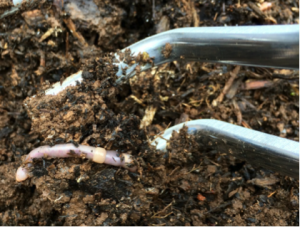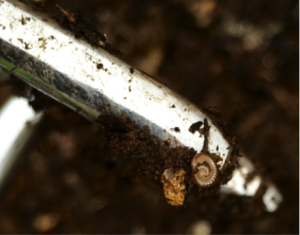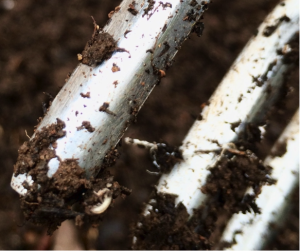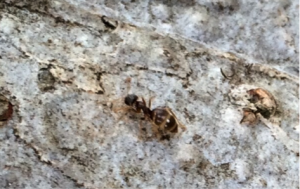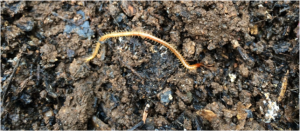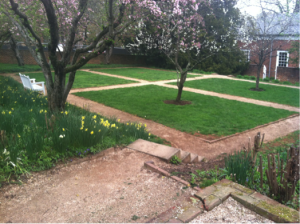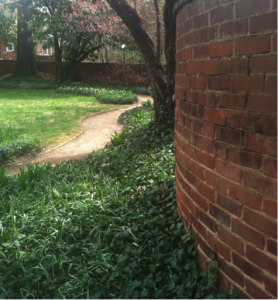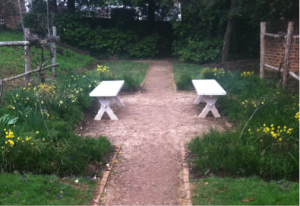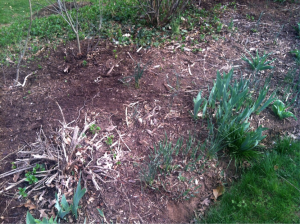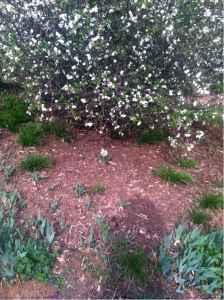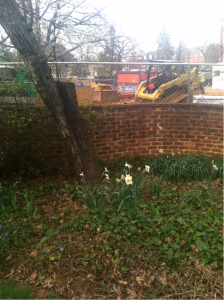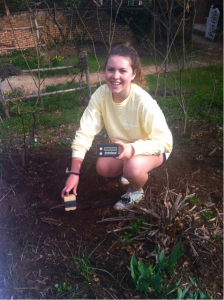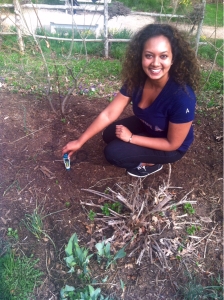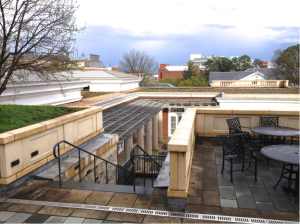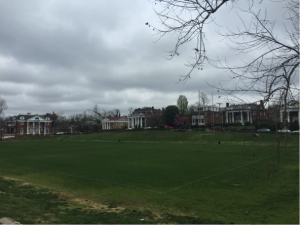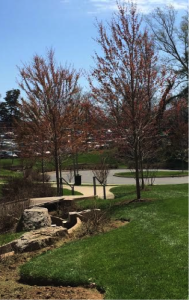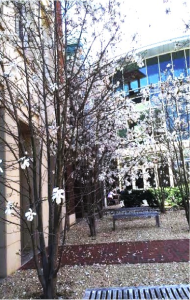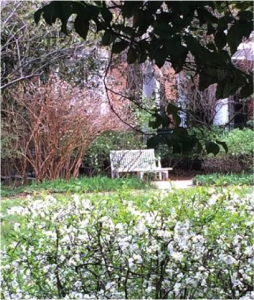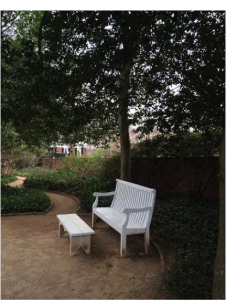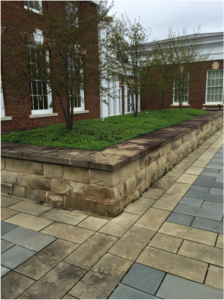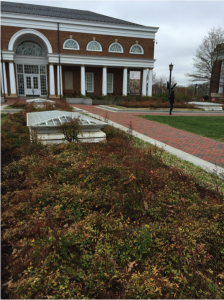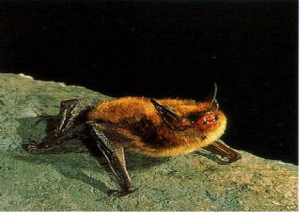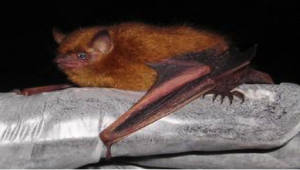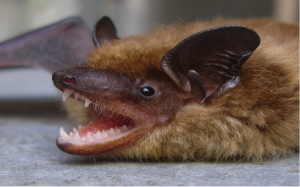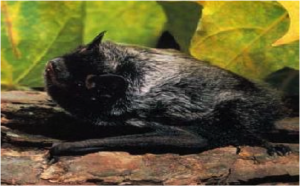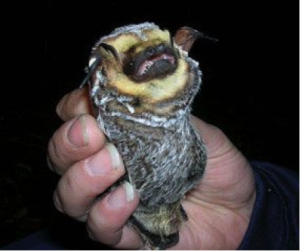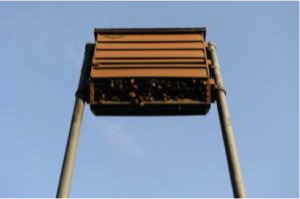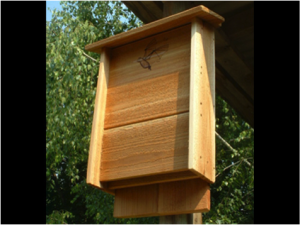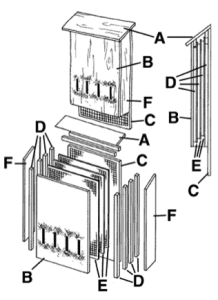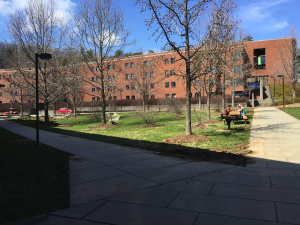“More respect is due to the little things that run the world.” – E.O. Wilson (Beatley, 35).
Whether it be for studying, relaxing in the shade, having a picnic in the grass, attending a social event, or participating in a walking tour, the Gardens of UVa are popular destinations for visitors, students, and faculty alike. As the BioGrounds Team tasked with investigating life in soils, we have asked ourselves the following questions: How often do visitors to the Gardens pay attention to the living organisms that exist just below their feet? What life forms actually exist within the soils of these mixed-use spaces? And, how can knowing what life forms exist in the soil better connect us to the Gardens with which we have already become so familiar?
Observations and Findings
From the time that we entered the Gardens, specifically Pavilion Garden II, I felt as though we had entered another world. Though we arrived to measure soil pH, water moisture, and search for signs of macro-invertebrates living in the soil, being in the Gardens instantly enriched day’s experience as I was overcome with awe in being surrounded by such a nature-full space. We suddenly found ourselves away from the hustle and bustle of daily University life and surrounded by trees, shrubs, flowers, grass, butterflies, bees, and a brick wall.
Since the Gardens are well maintained and experience increased foot traffic in the spring-time, I was initially concerned whether we would find many life forms in the soil. However, we were pleased to find ants, earthworms, centipedes, millipedes, beetles, slugs, tiny spiders, and what appeared to be barely-visible soil mites. The presence of these many organisms indicate that, despite these gardens being manicured and well-maintained spaces, its soils are full of life that is necessary to promote healthy plant growth (both directly and indirectly), as well as serve sources of food for other organisms higher up in the food chain (Moravec and Whiting, 2014). For example, in addition to being a food source for birds, earthworms help to add nutrients to the soil when they consume microorganisms and organic matter to produce nutrient-rich excrements. As these worms create burrows within the clay soils of the gardens, they also facilitate the infiltration of water and help to oxygenate the soil for healthy plant roots. Lastly, earthworms do best in soils with a nearly neutral pH, and higher moisture content, which is consistent with our findings (Card, 2011).
Earthworm
Millipede
Slug
Ant
Centipede
Experiences: The Healing and Restorative Power of our Gardens
While in the Gardens, I took some time to sit on a bench, clear my mind, and take in the surroundings. As I looked out and scanned over the Gardens, I noticed how safe, happy, and at peace I felt. I definitely felt a connection with this space after having a better understanding for what tiny life forms exists in its soils. Realizing how much I did not know made me more appreciative of these organisms as they all serve important roles in helping to provide us with the healthy gardens that we have today. For this reason, I think that the life in the soils of our gardens deserve much more respect and attention than they currently receive.
I later found myself making connections to what we learned in class regarding the concepts of “prospect,” “refuge,” and gardens as “healing spaces.” The Gardens at UVa are perfect examples of spaces with good prospect. A space with good prospect must have the ability to look out across a vast area. I was able to look over several of the multiple-tiered levels of the Gardens to not only see the space in its entirety, but also see parts of the University. Prospect is meant to foster feelings of openness and freedom, as well as safety and control (Browning and Ryan, 2014). A space with good refuge, away from University-related activities, and demonstrated by the brick walls, is also meant to foster feelings of safety and security and allow for healing and restoration (Browning and Ryan, 2014). Therefore, it should be known that the Gardens of UVa are not only habitats for many macro-invertebrates and arthropods, but also incorporate several biophilic elements that are relevant to our course.
Concept of Prospect
Concept of Refuge
So the next time you find yourselves in the Gardens, look down and see what living organisms might be co-inhabiting the soils of our University underGROUNDS. Then, take a moment to walk around, or sit on a bench, and experience their therapeutic and restorative powers for yourself! I certainly will.
Sources:
Beatley, Timothy. Biophilic Cities: Integrating Nature into Urban Design and Planning.
Washington, DC: Island, 2011. Print.
Browning, William, and Catherine Ryan. “14 Patterns of Biophilic Design.” 14 Patterns
of Biophilic Design. Ed. Alice Hartley. Terrapin Bright Green, 12 Sept. 2014. Web. 08 Apr. 2015. <http://www.terrapinbrightgreen.com/reports/14-patterns/>.
Card, Adrian. “Earthworms.” Earthworms. Colorado State University, 2011. Web. 8 Apr. 2015.
<http://www.ext.colostate.edu/mg/gardennotes/218.html>.
Moravec, Catherine, and David Whiting. “The Living Soil.” The Living Soil. Colorado State
University Department of Horticulture & Landscape Architecture, 2011. Web. 10 Apr. 2015. <http://www.ext.colostate.edu/mg/gardennotes/212.html>.
Post by Chantal Madray
